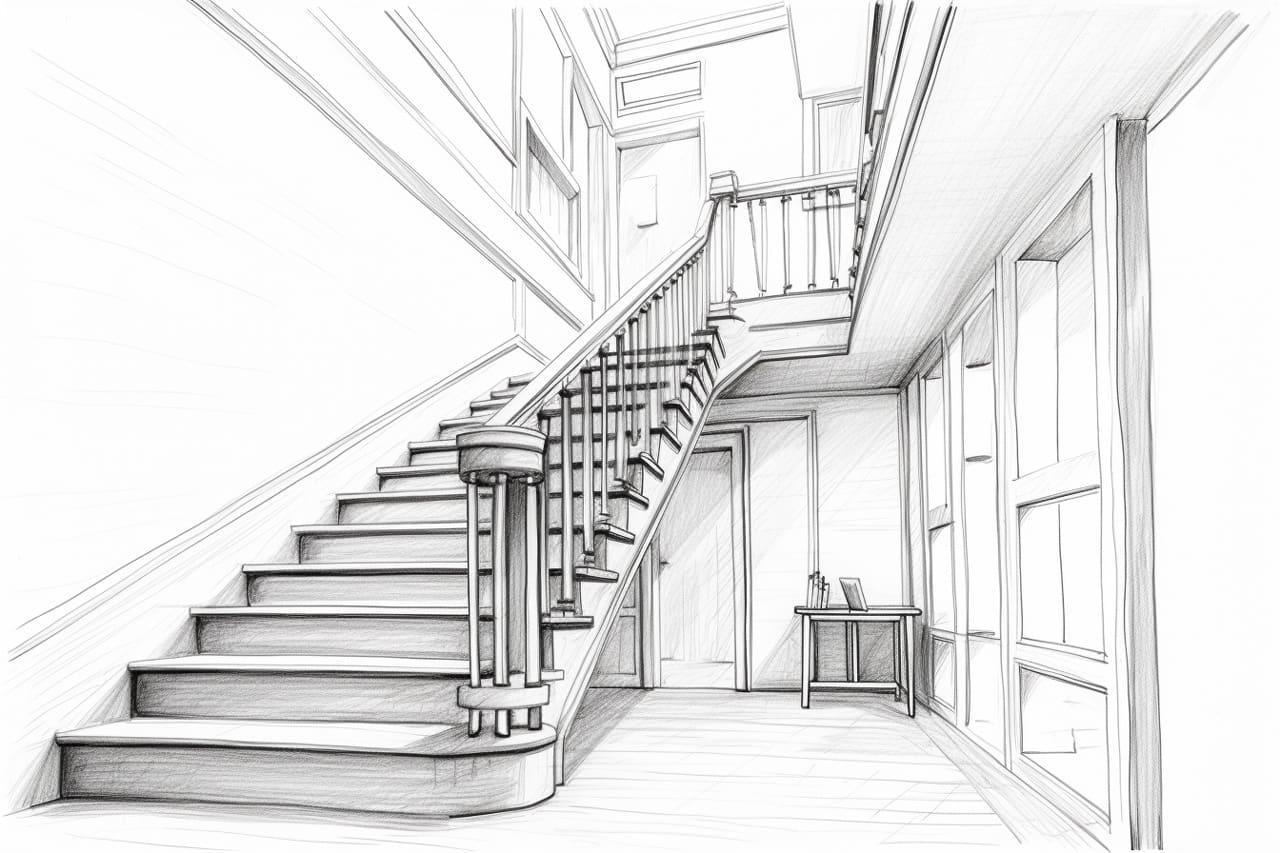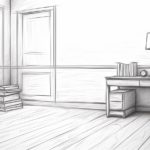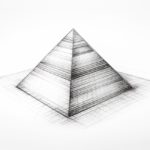Welcome to the world of drawing! Today, we will explore the fascinating subject of capturing the intricate beauty of a stairwell on paper. With their dynamic lines, shadows, and perspective challenges, Stairwells offer a unique and exciting opportunity for artists to hone their skills and creativity. In this session, we will delve into techniques for effectively portraying a stairwell’s depth, texture, and architectural details, inviting you to elevate your drawing abilities to new heights. So grab your sketchbook and pencils, and let’s embark on a journey of discovery and artistic expression as we unravel the secrets of drawing a stairwell.
Materials Required
To draw a stairwell, you will need the following materials:
- Drawing paper or sketchbook
- Pencils (different grades for shading and details)
- Eraser
- Ruler or straight edge for straight lines
- Protractor for measuring angles
- Optional: colored pencils or markers for adding color or additional details
These materials will help you accurately represent the perspective and details of a stairwell in your drawing.:
How to Draw a Stairwell: a Step-by-step Guide
Step 1: Setting Up the Composition
- Begin by drawing a horizontal line near the bottom of the page to represent the floor level. This will serve as a reference point for the base of the stairwell.
Step 2: Drawing the First Step
- From the floor level line, draw a vertical line to indicate the height of the first step. Use a ruler to ensure straight lines.
- Extend the vertical line to the right to create the width of the step. The length of this line will determine the depth of the step.
- Connect the top and bottom lines to form a rectangular shape, representing the first step.
Step 3: Adding Depth to the Stairwell
- To create the second step, draw another vertical line above the first step, maintaining a consistent height between steps.
- Repeat extending the line to the right and connecting the lines to form the second step.
- Continue adding more steps to the stairwell, ensuring each step is evenly spaced and aligned.
Step 4: Adding Detail and Depth Perception
- To add depth perception, draw diagonal lines connecting the corners of each step. These lines will create the illusion of depth and help define the stairwell structure.
- Add shading to the sides and undersides of the steps to enhance the three-dimensional effect. Lightly shade areas where shadows would naturally fall, such as under each step and along the sides.
- Use an eraser to clean up any stray lines or streaks, refining the overall appearance of the stairwell.
Step 5: Final Touches
- Add details or elements to the stairwell, such as handrails, bannisters, or decorative features.
- Evaluate the overall composition and make necessary adjustments to ensure the stairwell looks realistic and visually appealing.
- Once satisfied with the drawing, consider adding color or further shading to enhance the depth and dimension of the stairwell.
Tips:
- Take your time with each step to ensure precision and accuracy in your drawing.
- Use a reference image of a stairwell for inspiration and guidance on details and proportions.
- Practice drawing different perspectives and angles of stairwells to improve your skills and understanding of spatial relationships.
Conclusion
Congratulations on completing your drawing of the stairwell! Your attention to detail and use of shading bring depth and dimension to the piece. Remember that art is a continuous learning and growth journey, so keep exploring different techniques and subjects to further develop your skills. Your dedication and passion for art truly shines through in your work. Keep up the great work, and continue to create art that inspires both yourself and others—well done!
Fun Facts About Stairwells
- The idea of a spiral staircase dates back to the 5th century BC, with examples found in historic sites such as the Temple A at Selinunte, Sicily.
- The Tulip Staircase in the Queen’s House, Greenwich, London, is England’s first centrally unsupported spiral staircase and is known for its beautiful geometric design.
- The Vatican Museums in Rome contain a famous double helix staircase, designed by Giuseppe Momo in 1932, which allows visitors to ascend and descend without crossing paths.
- The Winchester Mystery House in California features a staircase that leads to nowhere, known as the “Mystery Staircase,” which has baffled visitors for years.
- The Haiku Stairs, also known as the Stairway to Heaven, in Oahu, Hawaii, is a steep hiking trail with over 3,900 steps that offers stunning island views.
- The Loretto Chapel in Santa Fe, New Mexico, is famous for its “Miraculous Staircase,” a spiral staircase with no visible means of support, built by a mysterious carpenter in the 1870s.
- Switzerland’s longest outdoor staircase is the Niesenbahn funicular railway staircase, with a total of 11,674 steps.
- The staircase at the Leaning Tower of Pisa is famous for its lean, caused by an unstable foundation, and has become an iconic symbol of Italy.
- In Feng Shui, staircases are considered conduits for energy flow, and their design and placement are considered essential for harmonizing the energy in a space.
- Staircases have been used in various cultures and religions as symbolic representations of ascension, growth, and spiritual enlightenment, with many ancient temples and sacred sites featuring elaborate staircases.
Suggestions for Scenes and Settings for Stairwell Drawings
- An abandoned, decrepit stairwell in an old building, with peeling paint and dramatic lighting casting shadows on the steps.
- A futuristic, sleek stairwell in a high-tech skyscraper, with glass walls and a spiral design.
- A grand, ornate stairwell in a historical mansion, with a sweeping spiral staircase and intricate carvings on the railings.
- A mystical, enchanted stairwell in a fantasy setting, with glowing crystals embedded in the steps and ivy winding around the railings.
- A minimalist, modern stairwell in a minimalist home, with clean lines and neutral colors, creating a sense of calm and serenity.
- A mysterious, hidden stairwell in a secret underground passage, with dim lighting and moss-covered stone steps leading into darkness.
- A bustling, crowded stairwell in a busy train station or subway, with people rushing up and down the steps amidst colorful advertisements and signs.
- A romantic, candlelit stairwell in a charming old inn, with flickering lights and flower petals scattered on the steps.
- A surreal, distorted stairwell in a dream-like landscape, with stairs that twist and turn in impossible ways and float in mid-air.
- A serene, nature-inspired stairwell in a zen garden, with wooden steps surrounded by lush greenery and trickling water features.









